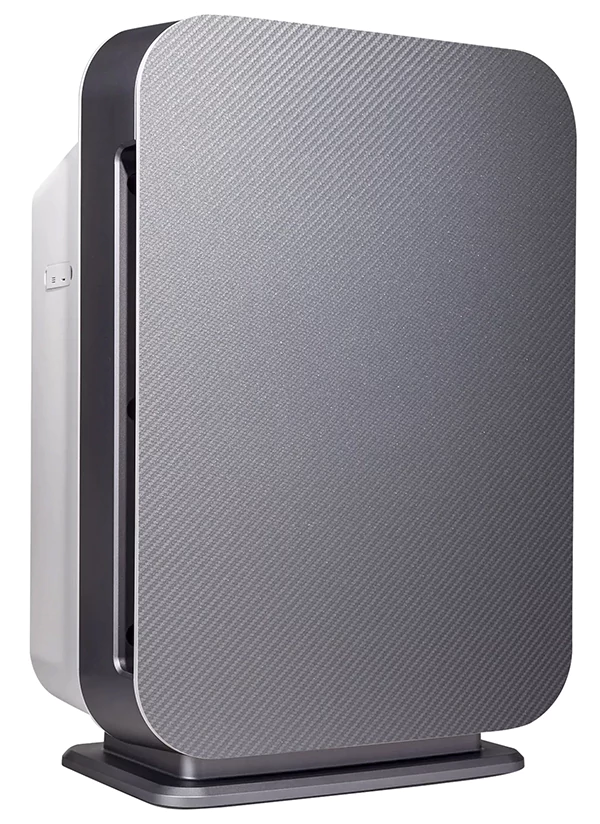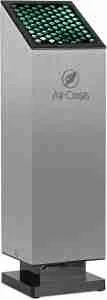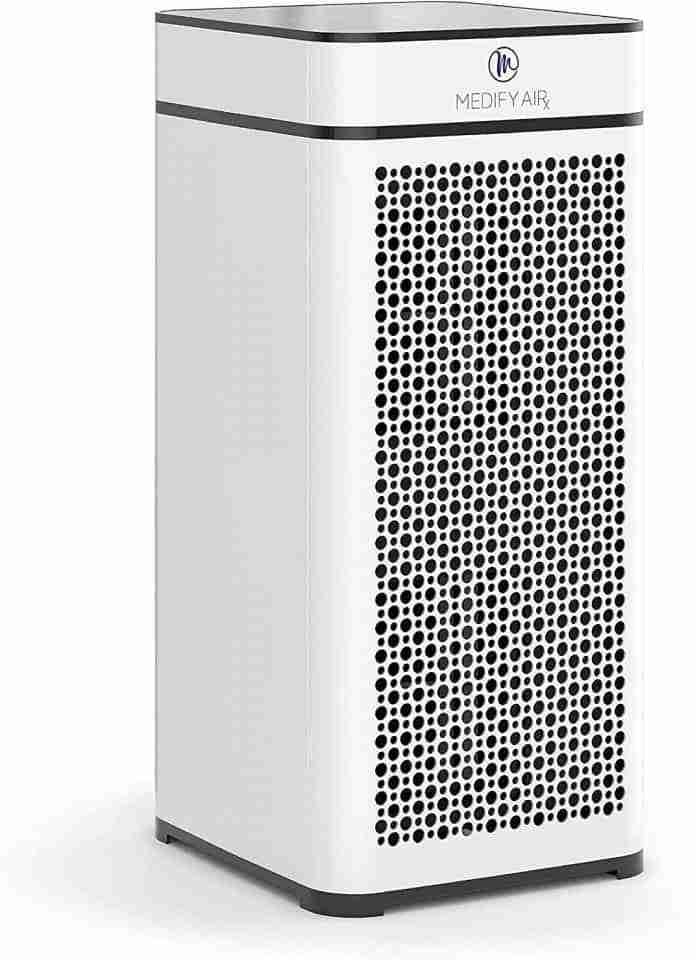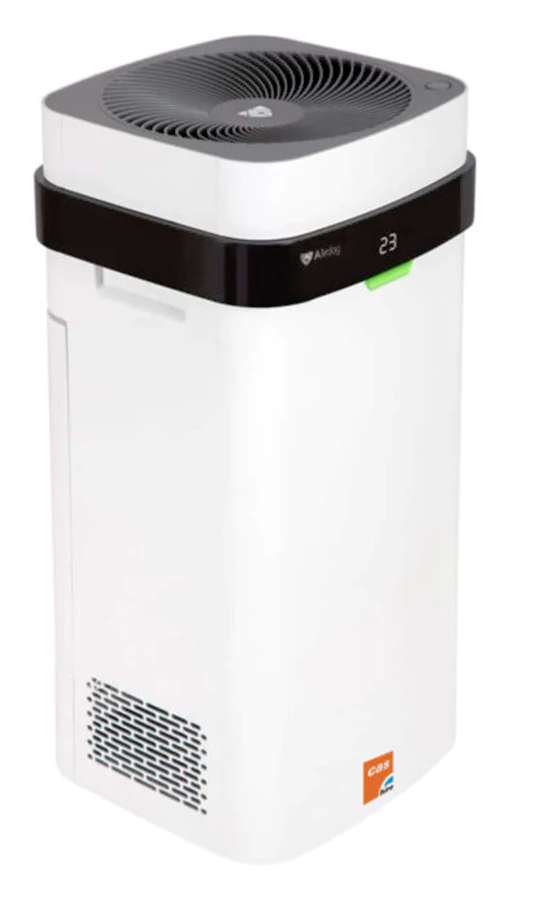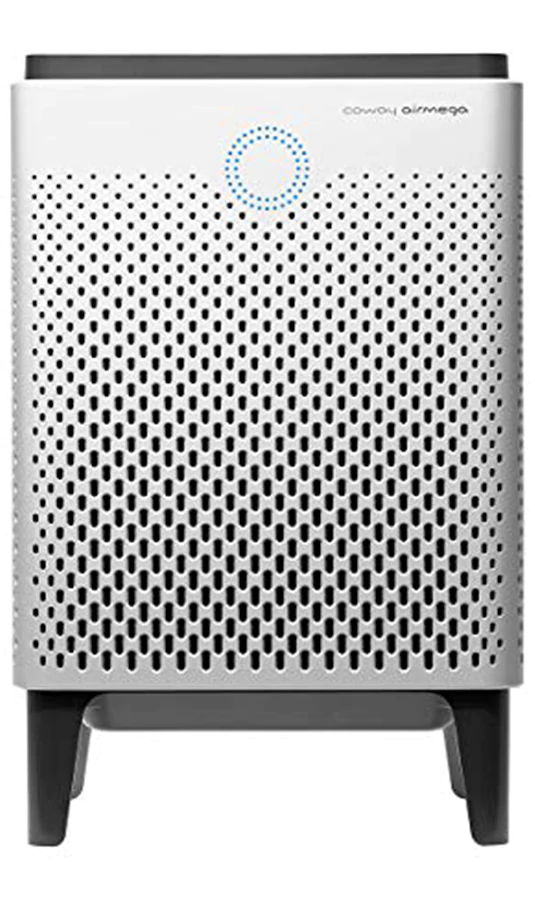Best Air Purifiers for Bacteria and Viruses (Including Covid)

Written By: Dr Fahad Yasin
- Updated On:
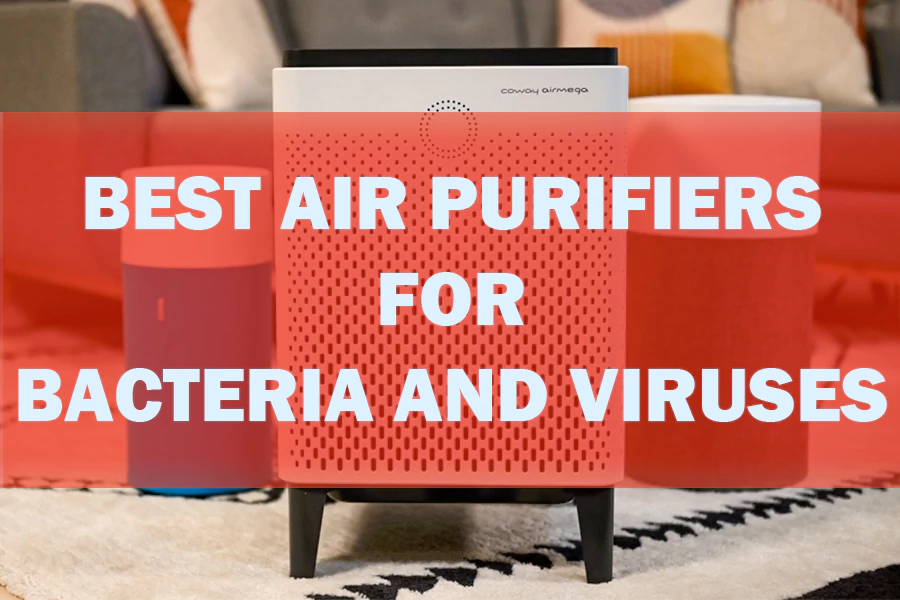
Bacteria and viruses are the tiniest particles of all available airborne particles. They can be as small as 20 to 250 nanometers. (0.02 – 0.25 micrometers). Covid (SARS-CoV2) particle size ranges between 0.06 and .14 microns.
Most HEPA air purifiers can trap 0.3 microns in size particles so that they won’t help with bacteria and viruses.
Here is a quick overview of the best air purifiers for bacteria and viruses
1
Best Overall
- Coverage: 505 sq ft 5 times hourly
- Particle Removal: 99.9% down to 0.003 microns
- CADR: 326 CFM
2
Medical-Grade AIir Filter
- Coverage: 320 sq ft 5 times hourly
- Particle Removal: 99.9% down to 0.1 microns
- CADR: 245 CFM
3
Next-Gen PCO Air Purification
- Coverage: 1,500 sq. ft.
- Particle Removal: 99% effective against viruses and bacteria
- CADR: N/A
4
Best Ionic UV Air Purifier
- Coverage: 1600 sq. ft.
- Particle Removal: 99% effective against viruses and bacteria
- CADR: N/A
5
Simple But Powerful
- Coverage: 1,000 sq. ft.
- Particle Removal: 99% effective against viruses and bacteria
- CADR: N/A
6
Perfect For Everyone
- Coverage: 336 sq ft 5 times hourly
- Particle Removal: 99.9% down to 0.1 microns
- CADR: 226 CFM
7
Perfect For Everyone
- Coverage: 624 sq ft 5 times hourly
- Particle Removal: 99.9% down to 0.01 microns
- CADR: 328 CFM
7
Less Maintenance
- Coverage: 270 sq ft 5 times hourly
- Particle Removal: 99.9% down to 0.0146 microns
- CADR: 206 CFM
NOTE: Air purifiers are sorted by how well they can help against bacteria and viruses. We included many other things to compare, such as capacity, what else they can remove from the air, and so on, but the main attention was how good they are against bacteria and viruses.
Table Of Content
Top 8 Air Purifiers for Bacteria And Viruses
A cutting-edge air purifier equipped with UltraHEPA technology. Not only does it trap airborne particles effectively, but it also has been laboratory-tested for COVID-19 removal, making it a preferred choice for virus elimination.
And that’s not all. It can clean 99.99% of airborne particles in size of 0.003 microns, including dust, pollen, smoke particles, bacteria and viruses, and much more.
It also has a 1.1lbs activated carbon filter to trap odors and gases and a pre-filter to trap larger particles like dust and pet hair.
AirDoctor not only traps particles by sucking them through the filters but also emits charged ions into the air to catch airborne particles in the air and kill them.
AirDoctor 3000 can clean 1,274 sq. ft. area 2x every hour or 505 sq. ft. 5x per hour. For larger spaces, I recommend AirDoctor 5500 model.
Pros
- Caches the tiniest airborne particles
- Laboratory tested to remove Covid-19
- Auto-Mode & Air Quality Sensor
- Air Quality Monitor
Cons
- No remote control and wifi
Alen Breathesmart 75i is proven to eliminate up to 99.9% of harmful particles as small as 0.1 microns. It has 3 filter options.
A versatile and high-tech air purifier, offering multiple filter choices, ideal for households with different needs, from pets to allergies.
It also has an ionizer that helps to remove bacteria and viruses. Alen Breathesmart 75i went through bioaerosol lab tests and proved to eliminate 99% of the covid-19 particle size range (.06 – .120 microns).
Alen Breathesmart 75i can clean spaces up to 1,300 sq. ft. every 30 minutes or 520 sq. ft. 5x hourly.
It has many smart features, such as a particle sensor, which allows you to see air quality with LED color rings, and the Alen Air app.
Pros
- Lifetime warranty
- Auto mode
- Low power consumption
- Wifi connectivity
Cons
- Expensive upfront cost
Puraclenz is a new brand in the air purifier market, and they are going in another direction with its patented technology. Puraclenz P1500 is equipped with PCO cells and UV light that generate ions.
Thanks to its aerodynamic conical shape, which maximizes contact time with reactive titanium dioxide surface.
A revolutionary air purifier focusing on ion generation for particle removal. It’s an environmentally friendly option with no ozone emissions.
Puraclenz has one filter – a pre-filter to trap large particles such as dust.
You will have to replace the cell once every 2-3 years, which is not cheap, on the other hand filter maintenance is cheap because they do not need to be replaced.
Pros
- Generates ozone-free ions
- Cleans also surfaces
- Great for viruses and bacteria
- Cleans up to 1,500 sq ft.
- Table, Wall, or Ceiling Mount Options
- Power consumption is only 15 watts
Cons
- Can’t filter pet dander, pollen, strong odors, and smoke particles
- The cell doesn’t last forever
Compact yet powerful, this purifier leverages AHPCO® and Bi-Polar® ionization to ensure a sanitized environment, targeting both air and surfaces. It also has UV light.
Air Oasis is laboratory tested to kill 99% of mold, viruses, and bacteria. It also breaks down VOCs on a molecular level.
It produces a tiny amount of ozone (less than 0.05 parts per million (ppm)) which is EPA and OSHA standards, so safe to use.
Pros
- Lifetime warranty
- Power consumption is only 15 watts
- Very small and compact size
- Cleans also surfaces
Cons
- Can’t filter pet dander, pollen, strong odors, and smoke particles
- AHPCO® cell doesn’t last forever
Prioritizing efficiency over aesthetics, this model combines UV-C bulbs with HEPA filtration, ensuring thorough air cleaning suitable for larger spaces.
But it can clean large areas up to 1000 sq. ft. with 3-5x air exchange. EnviroKlenz’s main part of the air purifier is Air Cartridge. It includes innovative earth mineral technology capable of destroying VOCs, chemicals, and other tiny pathogens.
EnviroKlenz is tested in all kinds of tests, for example, Air System Plus Microbial Reduction Rate Test, to prove it is good.
Pros
- Third-party tested and validated
- 5-year warranty
- Metal Body
Cons
- Bulky and large size
- Loud
- Expensive
Manufactured in the USA, the Medify MA-40 boasts versatility with its dual filter technology options, catering to various airborne particles and pathogens. Its advanced features, combined with its efficiency, make it a popular choice.
It has 2 filter technology options. One is H13 HEPA which is not good for bacteria and viruses. And the second option is H14 HEPA + UV light. Both options also include a pre-filter and carbon filter.
Option with H14 filter traps odors, VOCs, smoke, pollen, smog, pet dander, dust, and more. Thanks to UV light also kills bacteria and viruses.
It can trap 99.99% of particles down to 0.1 microns in size. Medify MA-40 can clean 840 sq. ft. large spaces in 30 minutes or 336 sq. ft. 5x hourly.
Pros
- Lifetime warranty
- Many great features
- Tempered Glass Touchscreen Technology
Cons
- Pre-filter is not dedicated
Independently verified by the Korea Conformity Laboratories, the Coway AirMega 400 stands as a robust air purifier that effectively combats a plethora of particles, including the COVID-19 virus. Its smart capabilities further enhance its appeal.
Coway AirMega 400 can clean 624 sq. ft. large spaces 5x every hour or 1,560 sq. ft. in 30 minutes.
Pros
Cons
- Expensive
- Bulky and large size
- Real-time air quality monitoring
- Smart Mode
- Tested to eliminate Covid-19
- Energy efficient
While the AirDog X5 might not achieve the minutest particle trapping like the AirDoctor, it offers remarkable purification that surpasses traditional HEPA filters trapping particles as small as 0.0146 microns. Its unique purification method and modern features set it apart.
Combining all systems together with AirDog X5, you will be protected against dust, pollen, hair dander, kitchen fumes, smoke, bacteria, and viruses.
AirDog X5 air purifier can clean 675 sq. ft. area 2x every hour or 270 sq. ft. 5x per hour. For larger spaces, I recommend the AirDog X8 air purifier.
Pros
- Washable Filters
- Cheap Maintenance (Don’t need to buy filters)
- The simple and easy-to-use app
- Auto mode
Cons
- More expensive than competitors (but no filter replacements)
Air Purifiers for Bacteria and Viruses
How Do Bacteria And Viruses Get Spread?
Bacteria and viruses can spread through air and surfaces. Coughing, sneezing, and touch are common transmission methods. They can survive on surfaces, posing risks when touched.
How Do Bacteria And Viruses Get Spread?

Among the most notorious airborne pathogens are:
- Influenza
- Common cold
- Measles
- Whooping cough
- Chickenpox
- COVID-19
Do Air Purifiers Remove Bacteria and Viruses?
Yes, but their efficacy varies. While some air purifiers struggle to remove them, those equipped with specialized technology can trap and neutralize these pathogens, offering cleaner air.
What to Look for in an Air Purifier for Pathogens?
There are a few things you should check. If the air purifier emits ions or it is a filter air purifier or combines both. Based on that, you should check the following things:
- Ion Emission: Some air purifiers release charged ions to neutralize pathogens. While effective, it’s crucial to ensure they emit ozone within safe limits.
- Filter Technology: Standard HEPA filters might not trap the smallest pathogens. Seek advanced filters capable of capturing particles smaller than 0.25 micrometers.
- Hybrid Systems: Combining filters with ionization often yields the best results, tackling a broad spectrum of airborne particles.
Conclusion

In conclusion, the effectiveness of an air purifier against pathogens depends on its technology and features. When purchasing, consider room size, maintenance, energy consumption, and other factors to make an informed decision.a


